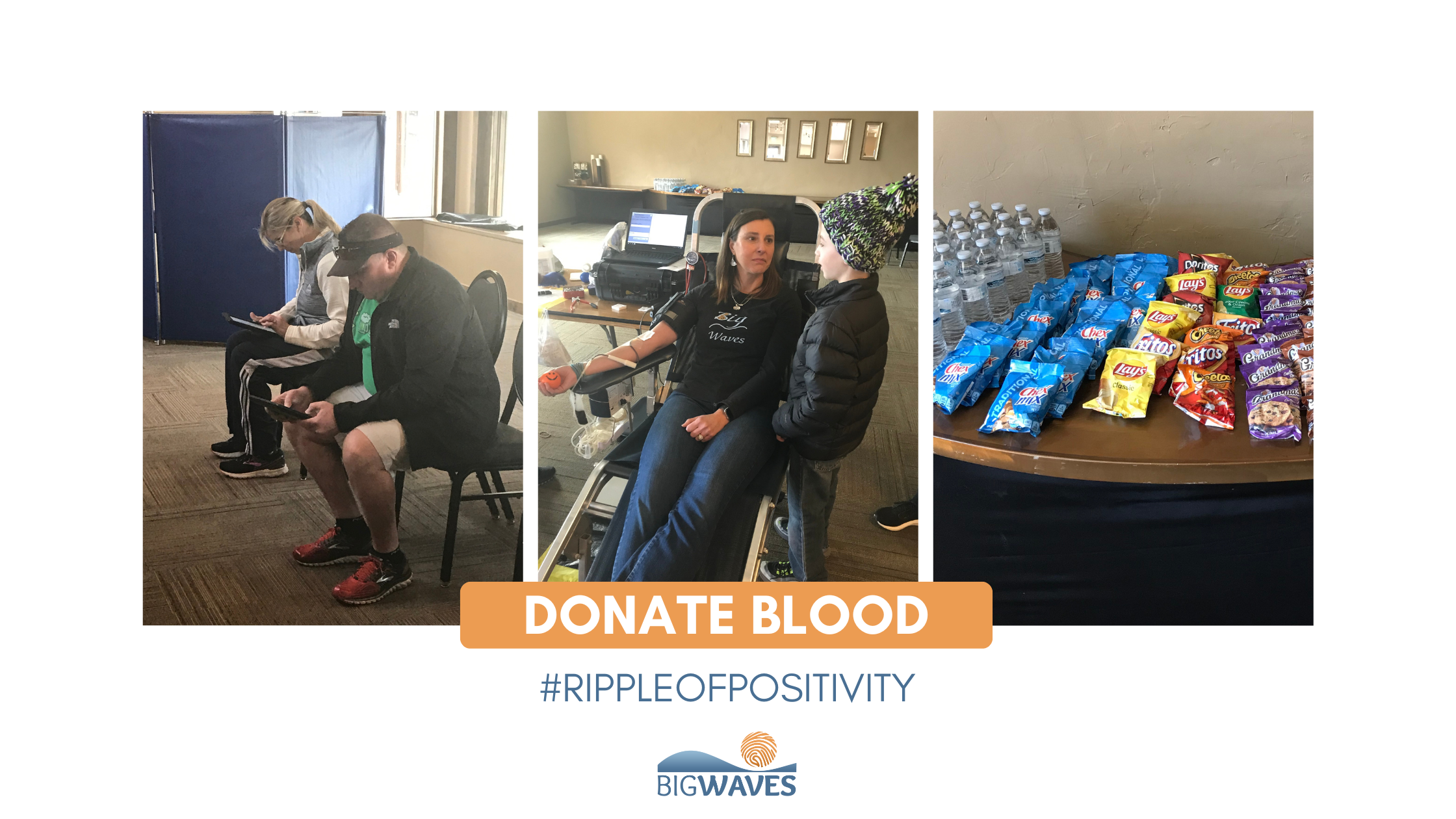Giving Blood: How You Can Be a Life Saver
Today, we’re diving into a topic close to our hearts—giving blood. As many of you may know, after the shooting that took Bubba’s life, blood donations and the incredible trauma doctors helped save Meghan’s and Asa’s lives. We want to pay it forward and create a ripple of positivity by encouraging you to donate blood.
On November 27, 2023, we will hold a Community Blood Drive at the Ranch Country Club in Westminster. You can register at vitalant.org use code 00427
Are you curious or concerned about giving blood? Read on to learn —
Why it’s essential to give
How your blood is used
The different kinds of blood donations
What you need to do to prepare for giving blood
What happens during the donation process
How you recover
And how often can you give blood?
When You Give, Others Live
Every 2 seconds, someone in the United States needs blood. That blood only has a shelf life of 42 days, so the supply needs to be constantly replenished.
How is Your Blood Used?
If you donate, your blood will be given to someone in need through a transfusion. The reason people need blood varies. It could be a natural disaster, surgery, or an act of violence.
There are different kinds of blood donation. Each one is used for different life-saving procedures and treatments.
Red blood cells are used to treat blood disorders like sickle cell disease, chronic anemia caused by kidney failure, or bleeding in the stomach or those who have experienced acute blood loss from trauma. Sometimes, babies born prematurely need a transfusion to increase their number of red blood cells.
Platelets are typically used to treat cancer or given open-heart surgery and organ transplant patients.
Plasma transfusions are used in cases of liver failure, infections, and severe burns.
“Whole blood” is usually given to people who have life-threatening injuries or during surgery.
How Do You Prep to Give Blood?
Donating blood is safe and easy. No matter where you choose to give, the process is similar.
Here are a few tips to make it as easy and worry-free as possible.
Get Sleep: Aim for 8 hours of sleep the night before
Hydrate: Drink plenty of water before you donate. Staying hydrated will also help you avoid lower blood pressure, the most common cause of fainting. Don’t drink alcohol or caffeine, which can dehydrate you too.
Eat healthy: Avoid high-fat foods like fried food or ice cream. Instead, eat healthy iron-rich foods since donating can reduce iron levels, like—
Beans
Nuts
Citrus fruits
Strawberries
Spinach or Broccoli
Pack Your ID Cards: Bring a driver’s license or passport. However, be sure to check with your local donation center since some venues require something different.
What happens during the blood donation process?
You’re prepped and ready to go, but now what? Here’s what you can expect during the donation process.
Registration: Sign in, flash your ID, and read up on information about your donation.
Health History & Mini Physical: expect to complete a questionnaire about your health history, including travel and lifestyle. Some questions may seem personal, but this is done to keep the blood supply safe from infectious diseases due to exposure through travel or other activities.
You’ll also have a mini-physical where someone will check your blood pressure, red blood cells, hemoglobin levels, and pulse.
Donation: It’s your big moment. Donating blood is a lot like getting your blood drawn. You’ll be seated while your arm is cleaned and sterilized. During a “whole blood” donation, about 17 ounces, 500 milliliters, or 1 pint of blood is collected. This is a little over the equivalent of a pint of ice cream.
Recovery: You’ll wait 10-15 minutes before leaving and be given a light snack and drink. Keep your bandage on for the next several hours. Once off, you can clean it with soap and water and avoid vigorous activities for at least 4 hours after you donate.
Some people may experience side effects like dizziness, lightheadedness, fatigue, bruising, bleeding, or pain, but this should go away fairly quickly. If you experience severe side effects, contact your doctor immediately.
When Can You Donate Again?
As we said above, there is a constant need to replenish the blood supply so you can make donating blood a regular habit. But how often you donate depends on what kind of donation you choose. Here are some guidelines we pulled off the Health and Human Services website—
Whole blood donation: 56 days
Platelet donation: 7 days
Double red cell donation: 112 days
Plasma donation: 28 days
If you want to learn more about the blood donation process or have other questions, check out the Red Cross website. It has a plethora of information, from Sickle Cell Trait Screening to general health considerations to medical conditions that may affect your eligibility.
There you have it. Our quick guide to how to be a lifesaver by giving a few minutes of your time and blood can create a legacy of hope for someone in need.

